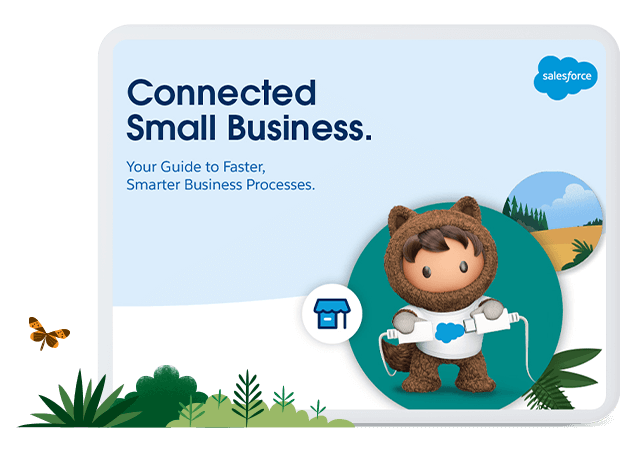Business process management (BPM) may seem like a minor concern for today’s SMEs, who have their hands full trying to keep up with a rapidly changing landscape. But it’s this pace of change – and the new digital imperative – that make business process management more important than ever.
New customer expectations for digital-first experiences require bold new strategies and processes. Businesses are scrambling to improve their employee experience and drive engagement in the face of the Great Resignation. Smaller companies are obliterating siloes and reimagining their everyday processes in order to be more data-driven. And the ‘Age of the Customer’ means that consumers are no longer willing to accept impersonal communications and long wait times – or any wait times at all.
Chances are, if your SME is still using the same business process management style it did just two years ago, you may be falling behind your customers and competitors. But why exactly is business process management so important? And how can you turbocharge your BPM to thrive in the next normal?
What is business process management?
Put simply, ‘business process management’ refers to how an organisation accomplishes its core business tasks. These are the everyday, ongoing processes that drive the business forward.
Without an effective strategy for managing these processes, SMEs are likely to suffer from inefficiencies, sub-optimal productivity, and poor customer and employee experiences. In other words, effective business process management is crucial for getting the most out of your SME.
What are some of the benefits of improved business process management?
Good business process management will ensure that every business process is optimised for efficiency, value and impact. BPM can help organisations –
Recognise and fix productivity bottlenecks
Identify cost inefficiencies and better deploy resources
Improve productivity and get the most out of their workforce
Gather and leverage data to make smarter business decisions
Optimise their customer experience (CX) and employee experience (EX)
By managing their processes and making sure they’re all centred around business objectives, SMEs will improve operational efficiencies and have more control over their future.
What about business process management software?
The use of business process management software is on the rise, as is the implementation of technologies in general. The Small and Medium Business Trends Report reveals that more and more organisations are tackling the new climate with new solutions, especially growing SMEs.
While the use of specialised technology is on the rise in all functions and departments, business process management software offers a more holistic solution, where benefits can be seen across the value chain.
Business management software enables SMEs to use analytics to track and measure KPIs, boost social collaboration among stakeholders, automate workflows, and design and deploy their processes more effectively. Some business management software even allows businesses to develop apps with zero coding knowledge.
Six steps for improving business process management
Reimagining your organisation’s everyday workflows from the ground up may sound daunting, but the truth is, it’s easier than you might think. Here are six quick steps that will help you improve your SME’s business process management.
Map all of your current business processes. If you’re using business process management software, it may feature business process modelling, but if not, you may want to create a flow chart for each process. Having a visual representation of your SME’s processes will make it easier to see the complete picture, from A to Z.
Eliminate any redundant and obsolete steps in your business processes. Once you have created a map, look for any unnecessary steps or tedious tasks in your current processes. You’ll want to keep your workflows lean, streamlined and consolidated, with an eye on eliminating any cost or labour inefficiencies.
See where automation can be introduced. AI is one of the biggest game changers in the digital-first landscape, and many SMEs are leveraging AI to improve their EX and CX. AI solutions can be especially effective for automating routine tasks and freeing the workforce to focus on more valuable and rewarding work.
Get feedback from the workforce. Data and analytics are great when fine-tuning your BPM, but it’s also important to consider the human element of the equation. Gather your teams or functions together and ask them for feedback on any pain points they’ve identified. Find out which parts of their daily processes they see as being the most inefficient – and see if they have any suggestions for how they could be improved.
Close any skills gaps. Have another look at the map of your business processes: are there any processes that could be optimised by introducing new skillsets? On-demand training platforms have made cross-skilling and upskilling the workforce easier and more affordable than ever, so there’s never been a better time to turbocharge your talent.
Set KPIs, deploy new processes, track the results and tweak. If you’ve completed the steps above, you’ll have a good idea as to how you can improve your business processes. So, figure out what benchmarks will be most helpful in evaluating the efficiency of your BPM, deploy your new streamlined processes, and track the results. Once you have enough data to get a clear picture of the strengths and weaknesses of your new BPM strategy, simply tweak and repeat.
Better BPM means better operational efficiency
BPM is something that we don’t think about every day. It exists below the hood, like the finely tuned gears of a sports car. But how SMEs go about managing their everyday processes has a large impact on how efficient and effective those processes will be.
Without a well thought out business process management strategy, inefficiencies are sure to rear their head. The workforce will be wasting time on repetitive, low-value tasks that could be automated. SMEs won’t be able to unlock the full value of their data, or pinpoint and address operational deficiencies. Productivity will suffer. And most of all, SMEs won’t have an accurate understanding of their workflows.
To see more about how SMEs can optimise their processes to reach their peak potential, download our eBook, The Connected Small Business, here. And for some hacks to improve productivity, check out our eBook here.









